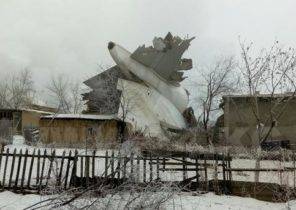
The last 25 years Latvia every day due to migration and mortality loses 70 people. Is it possible to stop this negative trend? What awaits the Latvian province? What changes will be needed the economy to minimize the damage from depopulation? The answers to these and other questions DELFI tried to find in the last report, economists at the Center for analytical research of CERTUS.
How many of us will remain in Latvia?
CERTUS predictions differ from those of the scenarios that are made up of Eurostat and the Department of Economics and statistics UN. International organizations believe that the population of Latvia in the near future will continue to disappear at roughly the same rate as before (in 25 years our country has lost 700 thousand people, representing 26% of the total population). Latvian researchers believe that the pace of depopulation will begin to slow and the situation stabiliziruemost at around 1,8-1,9 million (in 2016 in Latvia officially, there were 1.97 million inhabitants).
The basis for this optimistic assessment is the prediction about convergence of wages, which is to bring the income of Latvians to the average indicators for the EU. According to economists CERTUS, by 2020, the rate of emigration will be comparable to those of immigration, that is, the home will return about the same as to go abroad in search of a better life.
Similar processes have already been observed in Estonia for the second consecutive year there has been a positive migration balance. Last year they entered the country on 1 thousand 30 more people than had left her. Basically, it is the re-emigrants. Nothing like that in Latvia and Lithuania yet.
The main reason for the mass return of Estonians in the homeland is a rapid increase in living standards and a favourable situation on the labour market. The employment rate in Estonia reached record levels in recent history — 66%, and the income level of the population is growing faster than in other Baltic States — 7.6 percent compared to 2015. the Average salary in Estonia before taxes in the fourth quarter of 2016 amounted 1182 Euro, in Latvia — 894 euros, and in Lithuania (excluding individual enterprises) is 822 euros.
The continuation of the article under is. Continue reading.
The accuracy of the script CERTUS confirmed by the sociologists. According to the survey company for the study of public opinion SKDS, for the year by 4 percentage points decreased the number of those who are ready to leave to work abroad. If at the beginning of 2016 on suitcases sat 17% of inhabitants of Latvia, now it is only 13%.
What will we be?
According to estimates CERTUS, in 2030, the median age of the population of Latvia will reach 43 years. In simple words, every second will be older than 43 years. The life expectancy will continue to increase, which will significantly increase the burden on taxpayers and social infrastructure. In 1990, for every hundred residents of Latvia in working age (15-64) accounted for only 18 pensioners, by 2030 the proportion will change as 100 to 43.
I should add that in Strecansky parish now 1,000 inhabitants 759 people unhealthy age, according to the CSB.
The birth rate in Latvia will gradually rise but still remain below the mortality rate. It is projected that by 2030 every woman of reproductive age will have on average 1.8 children. To maintain a constant population size requires that the figure was at least 2,1.
Where will we live?
The research paints a pessimistic Outlook for the province. According to forecasts CERTUS, the population of Latgale for the next 12 years will be reduced by 60 thousand people, or 22%. The low level of wages in the regions will encourage people to move to the capital, especially active migration among young people. Now the level of wages in the country has almost doubled in Riga in 2016, according to the CSO, average wage in all enterprises, including small businesses, amounted to 1048 euros before taxes, but in Daugavpils it was possible to earn “dirty” only 632 Euro (average income level in Kurzeme was equal to Euro 716, in Zemgale — 725 euros, in Vidzeme — 675 euros, in Latgale — 592, Riga district and Jurmala — 935 euros).
As a consequence, the population in rural areas and small towns will be even older and even poorer. But Riga and Riga district, on the contrary, will receive for the development of a new impetus thanks to the visitors of working age.
The expected demographic processes researchers CERTUS illustrate the modeling of changes in the education system. So, by 2030, the number of students (16-18 years) in Riga will increase by 62% compared with the figure of 2016, and in Riga region — 34%. In turn, in Kurzeme the number of potential students over 12 years old will decline by 13%, in Vidzeme — by 18%, in Latgale — by 23%. The relative stability will remain in Zemgale — there is a reduction in the number of young people make up only 3%.
What to do?
The researchers ‘ findings can be expressed in one sentence — Latvia needs to build the economy given the current demographic realities. The inevitable reduction in the number of taxpayers in the regions will dramatically reduce the financial ability of municipalities to maintain infrastructure (schools, roads, street lighting system, etc.). But the economic potential of the capital and the Metropolitan surrounding area will grow, and this factor should be used for overall development. In other words, we need to allow Riga to earn, since this will benefit all the regions of Latvia.
To decrease the speed of the “devastation” of the province, it is necessary to reduce the difference in salaries between Riga and regions. According to estimates CERTUS, for example, if the gap will decrease by 50% compared to the baseline scenario (with the current GDP growth rate), it will allow the same Latgale 2030 to maintain the population of 21.5 thousand people more than in the main scenario (we are talking about one Rezekne in 2030-m).
The development of the regions, according to the researchers, it is possible to provide, primarily through attracting foreign investment in manufacturing. In turn Riga should position itself as a center of business activity, and not only at the level of the Baltic States, but the post-Soviet space. For example, you have to develop exports of higher education (2016/2017 academic year foreign students has helped the Latvian economy to create 170 million euros of value added according to estimates of CERTUS, the potential of the industry can count on a 500 million Euro per year). The second example is to draw in Riga back offices of international financial companies, with a special emphasis on corporations, which until Breccia was based in London.







